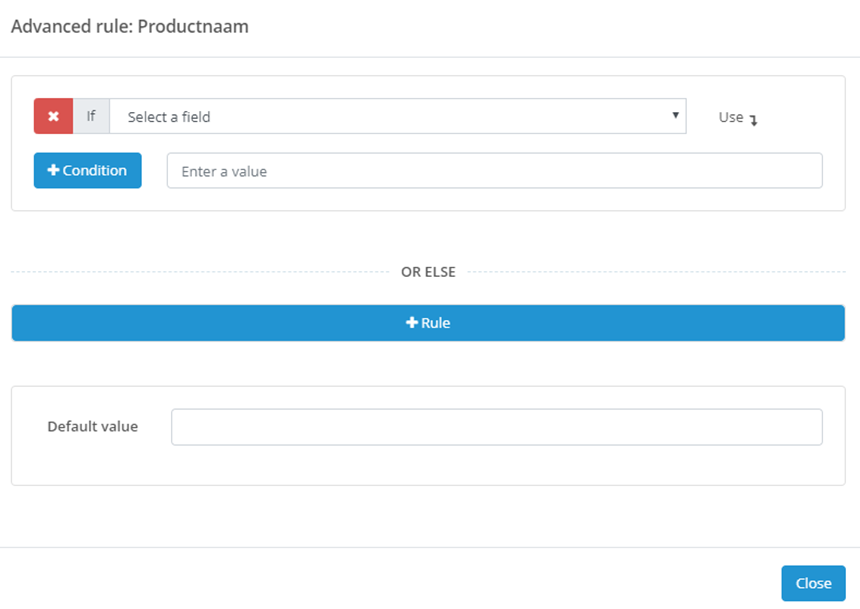Why should you invest in marketplace-specific content?
Did you know that the global ecommerce market has reached approximately $6.09 trillion this year? It is expected to grow at a CAGR of 9.49%, reaching $7.57 trillion by 2027 and surpassing $8 trillion by 2028.
On a regional scale, the European ecommerce sector remains one of the most dynamic and fast-growing industries, driven by increasing consumer adoption of online shopping and the expansion of digital infrastructure across the continent.
As of 2024, the European ecommerce market has continued its robust growth, with revenues reaching approximately $1.05 trillion, up from $887 billion in 2023. This growth trajectory is expected to persist, with projections indicating that the market will reach around $1.1 trillion by 2026.
What does this mean? We’ve entered the ‘platform economy.’ Online channels now shape how products are offered and sold. These platforms present sellers with vast opportunities but also significant challenges. One of the biggest hurdles is optimizing product content to ensure long-term returns.
Investing in marketplace-specific content isn’t just about boosting visibility, it's about creating exceptional customer experiences that foster trust and loyalty. Quality content reduces the likelihood of costly returns, which is critical considering that in 2022 alone, ecommerce returns cost businesses nearly $212 billion globally. Moreover, well-crafted content improves customer satisfaction, enhances ratings, and ultimately drives repeat purchases.

Figure 1. Why should you invest in marketplace-specific content?
In this article, we’ll cover the following topics:- Crafting search-friendly product titles
- Writing clear, quality product descriptions
- Choosing the best product images
- And, a bonus tip: using customer research tools to get ahead.
How to optimize your marketplace content in 3 steps?
A study by the European Commission found that 83% of shoppers consider product information crucial for online purchase decisions. Moreover, 53% would abandon a purchase if the information is poor.
Let’s dive into the three core steps for optimizing your content:
Step 1. Create a search-proof product title
Standing out in the vast sea of online products is every seller's first challenge. Your product title is your gateway to visibility - it must grab attention and rank in search results. But what makes a title effective?
Here’s how to create strong, search-friendly product titles:
- Align with buyer search behavior: Structure titles to match what potential customers are searching for. Use an order like brand - product name - type - size - key features.
- Follow marketplace guidelines: Each platform has title and data length requirements. Make sure your title fits within these limits.
- Lead with the essentials: Place the most important details, brand, product type, or unique features, at the start of the title.
A great product title not only catches attention but also convinces viewers to click. To streamline title creation, use smart tools like replacement tags. These tools let you update title fields dynamically and apply advanced formatting to meet marketplace requirements effortlessly.
In short, strong titles are your first step to success on any marketplace.

Step 2. Create a high-quality product description
A great product description does more than inform, it helps boost conversions. It enhances how customers think and feel about a product. Here's how to make yours stand out:
- Include all essential details: Ensure your description covers everything a buyer needs to know - features, benefits, dimensions, materials, and more.
- Localize for your region: If you’re selling internationally, make sure your product descriptions and details align with local norms and requirements. Include region-specific information such as metric or imperial measurements, compatible plug types, or regionally relevant compliance certifications.
For example, European customers may need CE certification details, while U.S. shoppers will expect details on UL-listed plugs. - Connect emotionally: Show how your product improves the buyer’s life. Answer questions like: Why does this product matter? How will it make things easier, better, or more enjoyable?
- Tell a story: Don’t just describe; create a narrative. Present your product as part of a solution, a lifestyle, or an experience that resonates with your audience.
- Optimize for each marketplace: Adjust descriptions to meet platform-specific rules. For example:
Amazon uses keywords in product descriptions for search rankings. Including keywords here can boost visibility.
Bol prioritizes keywords in titles or specs, making descriptions secondary. Tailor yours accordingly. - Highlight unique selling points (USPs): Use your description to showcase what sets your product apart. On Amazon, you can elevate this with A+ content - extra sections featuring images, videos, and infographics to tell a richer story.
A high-quality product description is more than words - it’s a tool to inspire, persuade, and convert. Tailor it to your audience and platform for maximum impact.
Step 3. Select the optimal product images
Humans are visual creatures, and in ecommerce, product images are often the first thing buyers notice. Studies confirm that visuals strongly influence engagement and purchase decisions. While often overlooked, high-quality imagery can be a major factor in driving sales.
What makes a great product image?
- High quality: Use crisp, clear images with good resolution, proper lighting, and a neutral background.
- Multiple perspectives: Offer alternative views of the product to help buyers understand every detail.
- Variation images: Include photos for every color or version of the product.
- Consistency: Maintain a uniform style across all images for a professional look.
Marketplace-specific needs
Different platforms have unique requirements for product imagery. Channels like Alibaba allow extensive image optimization, while others may take a simpler approach. Always tailor your image strategy to the marketplace you’re using.
Adapt to the product
- For fashion items like shoes or jackets on Zalando or Otto, invest in dynamic, high-quality images to enhance customer experience.
- For items like books on Amazon, focus on features like a compelling synopsis, as additional views might not be as impactful.
How imagine.io Can Help
- Create High-Impact Visuals to Win the Digital Shelf: Create 3D renders, augmented reality (AR) viewers, 3D product configurators, 360° spins, product video, and more to showcase products with precision and creativity.
- Enhance Customer Experience: Dynamic visuals help buyers imagine your products in real-world settings, boosting engagement, and conversions, and reducing returns.
- Save Time and Money: Skip traditional photoshoots. With imagine.io, create stunning assets quickly and cost-effectively, keeping up with trends and adapting fast.
Best Practices
Finally, always adhere to general marketplace guidelines for product images. High-quality, optimized visuals combined with tools like those from imagine.io can set your products apart, creating a seamless and engaging shopping experience.
Bonus Tip: Understand Your Marketplace Audience
Content optimization starts with knowing your audience. The better you understand them, the better you can create a seamless and engaging shopping experience. While platforms like Amazon, Rakuten, eBay, and Google offer tools to gather shopper insights, navigating this overwhelming landscape can be challenging.
That’s where ChannelEngine comes in. We’re the marketplace experts, here to simplify your journey. Instead of managing multiple tools and deciphering complex data on your own, let us guide you. Our expertise helps you:
- Optimize product content for any marketplace.
- Understand shopper behavior across platforms.
- Craft strategies tailored to maximize visibility and conversions.




